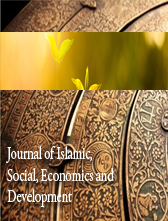AN EFFECTIVE LENGTH OF INTERVALS FOR FORECASTING IN FUZZY TIME SERIES
Abstract
The research on forecasting in fuzzy time series has increased due to its capability in dealing with uncertainty and vagueness. However, the effectiveness of the forecasting is hugely depending on the first step in every forecasting model being applied, that is the determination of the size of the intervals. However, the study on how to determine the length of intervals has rarely been discussed. This study suggests three different methods on choosing the best size of interval in fuzzy time series to increase the accuracy of forecasting in fuzzy time series. The three methods proposed are the average-based, half of the average based and natural partitions on 345 rules. We apply those methods to the selected data of tuberculosis reported monthly in Sabah starting from January 2012 until May 2020. The data is collected from the Queen Elizabeth Hospital, Kota Kinabalu, Sabah. According to performance evaluation in terms of MSE and RMSE values, both suggest that the length of interval determined by average-based length is the most accurate compared to the other two methods.













